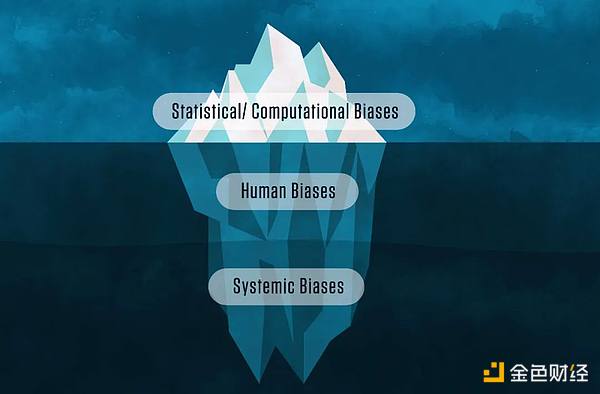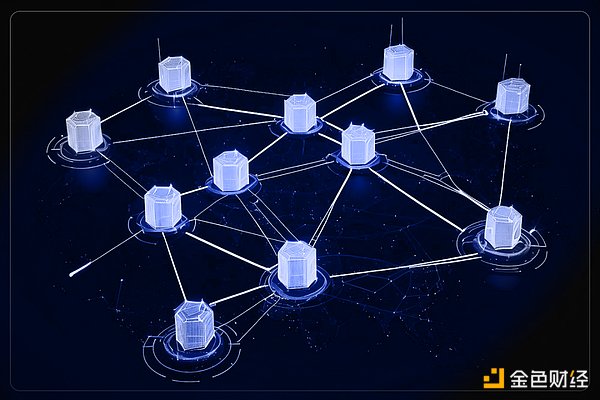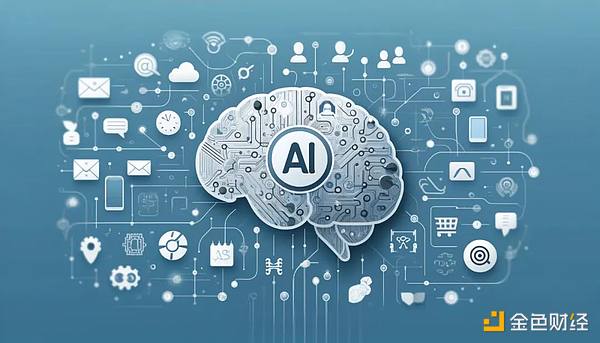Source: IOBC Capital
Web3, as a decentralized, open and transparent new Internet paradigm, has a natural opportunity to merge with AI. Under the traditional centralized architecture, AI computing and data resources are strictly controlled, and there are many challenges such as computing power bottlenecks, privacy leakage, and algorithm black boxes. Based on distributed technology, Web3 can inject new impetus into the development of AI through shared computing power networks, open data markets, and privacy computing. At the same time, AI can also bring many empowerments to Web3, such as smart contract optimization, anti-cheating algorithms, etc., to help its ecological construction. Therefore, exploring the combination of Web3 and AI is crucial to building the next generation of Internet infrastructure and releasing the value of data and computing power.
Data-driven: A solid foundation for AI and Web3
Data is the core driving force for the development of AI, just like fuel to an engine. AI models need to digest a large amount of high-quality data to gain in-depth understanding and powerful reasoning capabilities. Data not only provides a training basis for machine learning models, but also determines the accuracy and reliability of the models.
In the traditional centralized AI data acquisition and utilization model, there are several major problems:
The cost of data acquisition is high, which is difficult for small and medium-sized enterprises to afford;
Data resources are monopolized by technology giants, forming data islands;
Personal data privacy faces the risk of leakage and abuse
Web3 can solve the pain points of the traditional model with a new decentralized data paradigm.
Through Grass, users can sell idle networks to AI companies, decentralized capture of network data, and after cleaning and conversion, provide real, high-quality data for AI model training;
Public AI adopts the "label to earn" model, which uses tokens to incentivize global workers to participate in data labeling, gather global expertise, and enhance data analysis capabilities;
Blockchain data trading platforms such as Ocean Protocol and Streamr provide an open and transparent trading environment for both data supply and demand parties, encouraging data innovation and sharing.

Despite this, there are also some problems with real-world data acquisition, such as inconsistent data quality, difficulty in processing, lack of diversity and representativeness. Synthetic data may be the future star of the Web3 data track. Based on generative AI technology and simulation, synthetic data can simulate the properties of real data, serve as an effective supplement to real data, and improve data usage efficiency. In the fields of autonomous driving, financial market transactions, game development, etc., synthetic data has shown its mature application potential.
Privacy protection: the role of FHE in Web3
In the data-driven era, privacy protection has become a global focus, and the introduction of regulations such as the EU's General Data Protection Regulation (GDPR) reflects the strict protection of personal privacy. However, this also brings challenges: some sensitive data cannot be fully utilized due to privacy risks, which undoubtedly limits the potential and reasoning ability of AI models.
FHE, or fully homomorphic encryption, allows computing operations to be performed directly on encrypted data without decrypting the data, and the calculation results are consistent with the results of the same calculation on plaintext data.

FHE provides solid protection for AI privacy computing, enabling GPU computing power to perform model training and reasoning tasks in an environment without touching the original data. This brings huge advantages to AI companies. They can safely open API services while protecting business secrets.
FHEML supports encryption of data and models throughout the machine learning cycle, ensuring the security of sensitive information and preventing data leakage risks. In this way, FHEML strengthens data privacy and provides a secure computing framework for AI applications.
FHEML complements ZKML, which proves the correct execution of machine learning, while FHEML emphasizes computing on encrypted data to maintain data privacy.
The computing power revolution: AI computing in decentralized networks
The computational complexity of current AI systems doubles every 3 months, resulting in a surge in computing power demand, far exceeding the supply of existing computing resources. For example, OpenAI's GPT-3 model training requires huge computing power, equivalent to 355 years of training time on a single device. Such a computing power shortage not only limits the progress of AI technology, but also makes those advanced AI models out of reach for most researchers and developers.
At the same time, the global GPU utilization rate is less than 40%, coupled with the slowdown in microprocessor performance improvement, and chip shortages caused by supply chain and geopolitical factors, which make the computing power supply problem more serious. AI practitioners are in a dilemma: either buy hardware or rent cloud resources. They are in urgent need of an on-demand, cost-effective computing service. IO.net is a decentralized AI computing network based on Solana. By aggregating idle GPU resources worldwide, it provides AI companies with an economical and accessible computing market. The computing power demander can publish computing tasks on the network. The smart contract assigns the tasks to the miner nodes that contribute computing power. The miners perform the tasks and submit the results. After verification, they will receive points as rewards. IO.net's solution improves resource utilization efficiency and helps solve the computing power bottleneck problem in fields such as AI. In addition to general decentralized computing power networks, there are also platforms such as Gensyn and Flock.io that focus on AI training, as well as dedicated computing power networks such as Ritual and Fetch.ai that focus on AI reasoning. Decentralized computing power networks provide a fair and transparent computing power market, break monopolies, lower application barriers, and improve the utilization efficiency of computing power. In the web3 ecosystem, the decentralized computing network will play a key role, attracting more innovative dapps to join and jointly promote the development and application of AI technology.
DePIN: Web3 empowers Edge AI
Imagine that your mobile phone, smart watch, and even smart devices at home have the ability to run AI-this is the charm of Edge AI. It allows computing to occur at the source of data generation, achieving low latency and real-time processing while protecting user privacy. Edge AI technology has been applied to key areas such as autonomous driving.

In the field of Web3, we have a more familiar name-DePIN. Web3 emphasizes decentralization and the sovereignty of user data. DePIN can enhance user privacy protection and reduce the risk of data leakage by processing data locally. The native Token economic mechanism of Web3 can motivate DePIN nodes to provide computing resources and build a sustainable ecosystem. At present, DePIN is developing rapidly in the Solana ecosystem and has become one of the preferred public chain platforms for project deployment. Solana's high TPS, low transaction fees and technological innovation provide strong support for the DePIN project. At present, the market value of DePIN projects on Solana exceeds 10 billion US dollars, and well-known projects such as Render Network and Helium Network have made significant progress. IMO: A new paradigm for AI model release The concept of IMO was first proposed by Ora protocol to tokenize AI models.
Under the traditional model, due to the lack of a revenue sharing mechanism, once an AI model is developed and put on the market, it is often difficult for developers to obtain sustained benefits from the subsequent use of the model, especially when the model is integrated into other products and services, it is difficult for the original creator to track the usage, let alone obtain benefits from it. In addition, the performance and effect of AI models often lack transparency, which makes it difficult for potential investors and users to assess their true value, limiting the market recognition and commercial potential of the model.
IMO provides a new way of funding support and value sharing for open source AI models. Investors can purchase IMO tokens and share the subsequent benefits generated by the model. Ora Protocol uses two ERC standards, ERC-7641 and ERC-7007, combined with AI Oracle (Onchain AI Oracle) and OPML technology to ensure the authenticity of AI models and the ability of token holders to share benefits.
The IMO model enhances transparency and trust, encourages open source collaboration, adapts to crypto market trends, and injects momentum into the sustainable development of AI technology. IMO is still in the early trial stage, but as market acceptance increases and participation expands, its innovation and potential value are worth looking forward to.
AI Agent: A New Era of Interactive Experience
AI Agents can perceive the environment, think independently, and take corresponding actions to achieve set goals. With the support of large language models, AI Agents can not only understand natural language, but also plan decisions and perform complex tasks. They can act as virtual assistants, learn their preferences through interaction with users, and provide personalized solutions. In the absence of clear instructions, AI Agents can also solve problems autonomously, improve efficiency, and create new value.
Myshell is an open AI native application platform that provides a comprehensive and easy-to-use creation tool set, supports users to configure robot functions, appearance, sound, and connect to external knowledge bases, etc., and is committed to creating a fair and open AI content ecosystem, using generative AI technology to empower individuals to become super creators. Myshell has trained a special large language model to make role-playing more humane; voice cloning technology can accelerate the personalized interaction of AI products. MyShell reduces the cost of voice synthesis by 99%, and voice cloning can be achieved in just 1 minute. Using Myshell's customized AI Agent, it can currently be applied to video chat, language learning, image generation and other fields.

In the integration of Web3 and AI, the current exploration is more about the infrastructure layer, how to obtain high-quality data, protect data privacy, how to host models on the chain, how to improve the efficient use of decentralized computing power, how to verify large language models and other key issues. With the gradual improvement of these infrastructures, we have reason to believe that the integration of Web3 and AI will give birth to a series of innovative business models and services.
 JinseFinance
JinseFinance
 JinseFinance
JinseFinance JinseFinance
JinseFinance Coinlive
Coinlive  Beincrypto
Beincrypto Coinlive
Coinlive  Aptos
Aptos Cointelegraph
Cointelegraph Bitcoinist
Bitcoinist Cointelegraph
Cointelegraph Cointelegraph
Cointelegraph